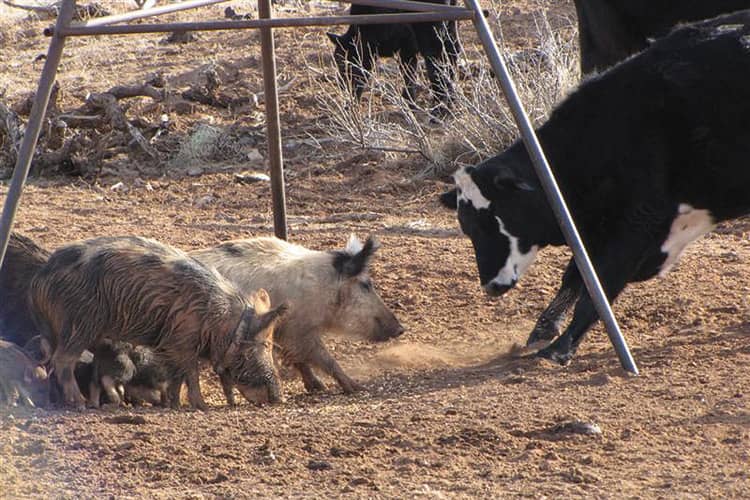U.S. Feral Pig Problem Increasing, Texas Hog Population to Triple in Five Years
OutdoorHub Reporters 04.19.13

It is no question that the nation’s feral pig numbers are on the rise, to the detriment of both farmers and native wildlife. New Mexico recently launched a $1 million project that will involve both wildlife employees and hunters in an effort to quell the hogs’ population boom, but it is outmatched by nearby Texas, which spends $7 million on their management programs. Over 5 million feral pigs exist in the nation, and Texas is bearing the brunt of their destructive habits.
Nearly half of the country’s feral pigs reside in Texas. According to a study conducted by researchers at Texas A&M University, that number is expected to triple by the next five years. Just in agricultural damages, the hogs cause upwards of $52 million per year. Feral pigs have the highest reproductive of any hoofed animal and produce 1 and a half litters every year. This is not surprising since the animals become sexually mature at 8 months and raise litters of 4 to 6 piglets.
The Lubbock Avalanche-Journal reports that to keep the invasive species in check, Texas would have to cull nearly 66 percent of the animals to prevent them from breeding. That is a very tall order. In a 2010 survey taken by the state’s landowners, trapping and hunting methods accounted to 754,646 pigs taken in that year, amounting to roughly 29 percent of the population.
Wildlife officials maintain that coordinated efforts are needed to combat the population rise. To this end, many states are calling for more hunters to hit the field with the hogs in mind. As an invasive species, hunting regulations on feral pigs are often minimal, so be sure to check with your local wildlife agency office.

